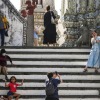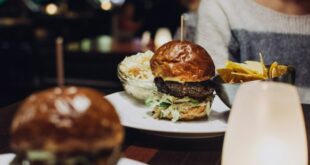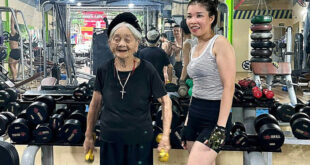MorningStar in the U.S., Giorgio Auctions in Hungary and Bonhams in the U.K. are the three latest foreign auction houses suspected of selling fake Vietnamese paintings.
Ace Le, editor-in-chief of local art magazine Art Republik Vietnam and co-founder of a network of Southeast Asian curators called Of Limits, has recently accused MorningStar eArt Group of selling two fake paintings attributed to the renowned late painters Le Pho and Vu Cao Dam, Giorgio Auctions of selling one silk painting falsely attributed to Mai Trung Thu and Bonhams of another one attributed to painter Nguyen Khai.
“All auction houses have been charged with selling fake paintings and in this regard, only differ with each other in terms of degree,” Le, who in recent years has written extensively on his Facebook page to expose plagiarism of Vietnamese art on the international market, says.
 |
|
A painting titled ‘Thieu Nu Trong Vuon’ (Girl in the Garden) attributed to the late master Le Pho is being put up for sale at MorningStar. The auction house expects to get US$20,000-40,000 for the work, but art experts in Vietnam suspect the painting to be fake. Photo courtesy of MorningStar |
As more and more fake paintings are discovered, art experts attribute this increasing exposure of fraud to mainstream and social media, which allows the country’s artistic community and public to scrutinize the sales of Vietnamese art abroad.
Over the years, whenever there is suspicion, Vietnamese art experts, artists and their families, media agencies, and other stakeholders have at least notified auction houses to re-examine and withdraw the suspected paintings from sale.
For instance, at the end of last year Sotheby’s Hong Kong removed a three-panel lacquer painting titled ‘L’image Traditionnelle d’une Maison de Paysan’ (‘The Image of a Traditional Thatch House’) which was falsely attributed to the late Nguyen Van Ty, another well-known name among an older generation of Vietnamese painters who graduated from the prestigious Indochina College of Fine Arts, now called the Vietnam University of Fine Arts.
In September 2019 the same auction house had to withdraw from sale two other problematic paintings: ‘La Thu’ (‘The Letter’) attributed to To Ngoc Van and ‘Hai Co Gai’ (‘Two Girls’) attributed to Tran Van Can.
In the latest cases, the two paintings put up for sale as part of MorningStar’s June Art and Asian Sale auction, ‘Thieu Nu Trong Vuon’ (‘Girl in the Garden’) attributed to Le Pho, and ‘Divinité’ (‘Divinity’) attributed to Vu Cao Dam, and Giorgio Auctions’ silk painting of a young woman attributed to Mai Trung Thu are suspected of plagiarism because their colors and styles are too “careless” to have been created by those masters.
As for Bonhams’ untitled painting attributed to Nguyen Khai, who is supposed to have done it in 1969, the work has been disowned as fake by the painter himself.
Dire and lasting consequences
According to art researcher Pham Long, counterfeiting of Vietnamese works on the international market, which many local experts agree is partly owed to organized forgery rings in Vietnam, began to proliferate when the late Pho became the first artist from the country to cross the US$1-million mark for a work in 2017.
Pho was an Indochina College of Fine Arts graduate and one of the “big four” Vietnamese painters who migrated to France and made their names in Europe in the 20th century. The other three, also graduates of the same school, were Dam, Thu and the only woman in the group, Le Thi Luu.
Long says most fakes are rip-offs of these and other Indochina College of Fine Arts alumni because their works fetch high prices and the painters are dead and did not leave much paperwork behind for verification.
“Many auctions even showcase paintings that freely imitate the styles of certain painters and bear their fake signatures. This is truly dangerous because it jeopardizes those painters’ prestige and destroys the art market.”
Another art researcher, Ngo Kim Khoi, shares this opinion.
Paintings with distorted messages and crude techniques and colors falsely attributed to famous Vietnamese painters make collectors shy away from those names and even cause foreign museums to re-evaluate and remove them from their collections genuine works they have bought.
“We may think the art market is going up while it is actually going down, and will destroy the prestige of Vietnamese art. People will no longer trust and invest in the renowned masters from the Indochina College of Fine Arts.”
Weak protection from Vietnam, no due diligence by auction houses
When there is a suspicion of forgery, the response from Vietnam tends to be feeble.
For instance, Vietnamese painters who are still alive, relatives of late painters and other stakeholders such as local museums often avoid making statements about suspected fakes if they do not know it for a fact.
They try to minimize conflicts and only notify foreign auction houses if they know for sure.
A prime example of this occurred in 2019 when Sotheby’s ‘The Letter’ was suspected to be a fake.
The late Van’s son, To Ngoc Thanh, intended to remain silent at first, believing “nothing good” would come of it.
Only after some consideration did he collaborate with the Vietnam Museum of Fine Arts and a few media agencies to notify Sotheby’s that the aboved-mentioned museum was in fact in possession of the original of the same name.
In the case of Sotheby’s other fake, ‘The Image of a Traditional Thatch House,’ the late Ty’s family did not even notify the auction house but merely made public the information to alert the community.
“Most Vietnamese paintings are sold abroad, and so any problem that arises will depend on the laws of the country where the auction takes place,” Le says to explain Vietnam’s generally feeble response.
“Not everyone here knows international laws or has the capacity or resources to handle the situation.”
Even in Vietnam, art experts point out, the legal framework does not yet provide adequate copyright protection for art.
For instance, as many as 15 out of a total of 17 paintings displayed at an exhibition titled ‘Nhung Buc Tranh Tu Chau Au Tro Ve’ (‘The Return of Vietnamese Paintings from Europe’) held in HCMC in 2016 were found to be fake.
Their collector, Vu Xuan Chung, responded by saying he had simply trusted and bought them from Jean François Hubert, an authentication expert at Christie’s Hong Kong, and that was the end of the affair.
According to art journalist Ly Doi, the incident was not dealt with properly because of an inadequate legal framework, and now nobody knows what happened to those fakes.
Le, who has written about numerous basic mistakes that Christie’s Hubert has made with respect to Vietnamese art, says while big auction houses often hire experts exclusively for Vietnamese art or Vietnamese art as part of Southeast Asian or Asian art, smaller ones do not.
At such places, a single expert often has to handle various categories encompassing both paintings and antiques.
Most of these so-called experts do not know Vietnamese or Vietnamese culture, and consequently make many mistakes in authenticating Vietnamese art, Le says.
Another cause of mistakes is the fact that many auction houses lump Vietnamese and Chinese paintings in one category and assign the task to Chinese-art authentication experts.
They cannot read the traditional Vietnamese Nom script, and this causes errors such as the one that recently occurred at Aguttes auction house in France when Tran Binh Loc was mistaken for Tran Tan Loc and Luong Xuan Nhi for Dung Doan.
 |
|
In March, Aguttes auction house mistakenly attributed ‘Thieu Nu Chai Dau’ (Girl Combing Her Hair) to the late painter Tran Binh Loc while the actual artist is another late master, Tran Tan Loc. This painting was later sold for EUR338,000 ($357,000). Photo courtesy of Aguttes |
Le says some foreign auction houses have started to correct this by consulting Vietnamese experts to help them weed out and withdraw fake paintings.
Based on the information given to him, he provides insights in three areas: origin or “provenance”, visual analysis and forensic examination, he says.
“But many auction houses simply ignore experts’ advice to pursue profits.”
Art experts therefore advise collectors and other buyers to take precautions by looking up experts’ writings and opinions before buying so that they do not unwittingly enable fake art to thrive.
- Reduce Hair Loss with PURA D’OR Gold Label Shampoo
- Castor Oil Has Made a “Huge” Difference With Hair and Brow Growth
- Excessive hair loss in men: Signs of illness that cannot be subjective
- Dịch Vụ SEO Website ở Los Angeles, CA: đưa trang web doanh nghiệp bạn lên top Google
- Nails Salon Sierra Madre
 VnExpress News The News Gateway of Vietnam
VnExpress News The News Gateway of Vietnam





